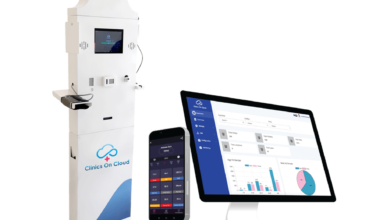What is medicine and what is not?

Although the Medicines Act contains a definition for the term “medicinal product,” it can be difficult to distinguish it from other product groups in individual cases, mainly if a product is intended to serve different purposes simultaneously.
The attribution has significant legal and practical importance. Which criteria are decisive for the classification, and how can it be recognized whether a product is medicinal or not?
In Canada, the term medicinal product is a bit more complex due to history. In addition to the “actual” medicinal products under the European specifications, it also includes so-called “valid medicinal products.”
Substances and active ingredients
According to Canada Drug Direct, substances are not just chemical elements and compounds or their naturally occurring mixtures and solutions. Plants, parts of plants, and their ingredients are also included, animal bodies and body parts as well as microorganisms and viruses including their components or metabolic products.
A substance becomes an active substance when used in the manufacture of medicinal products as an “active substance” or only becomes so through further processing. This means that specific precursors, such as those that occur in gene transfer drugs, are also covered by the term active substance.
Finished drug
Essential for the definition of the “finished medicinal product” are the features “prepared,” “intended for sale to consumers,” and “industrial process” or “commercially manufactured.” From this, it can be deduced that finished medicinal products regularly come onto the market in larger quantities. As “goods of a special kind,” they expose the population to greater risks than other everyday products such as food. This is why finished medicinal products must be tested for quality, effectiveness, and safety before they are marketed for the first time.
Note: Ready-to-use medicinal products have an approval number on the packaging. or reg. no
Prescription and off-the-shelf medicinal products
The situation is different with prescription and off-the-shelf medicinal products. A recipe is made as a one-off product based on a doctor’s prescription or at a patient’s request. It is not a finished medicinal product and therefore does not require approval. An individual authorization procedure for these medicinal products would also hardly be practicable.
Defective is manufacturing a medicinal product in batch sizes of up to one hundred ready-to-dispense packs or a corresponding quantity in one day. Although they are close to a finished medicinal product, the quantities are considerably smaller than in industrial production.
As a rule, the group of physicians and patients who come into contact with the respective medicinal product is manageable, and the risk can be regarded as limited. Further details on the production of prescriptions are laid down in the pharmacy operating regulations.
Products bordering on medicinal products
Points of contact with related product groups arise with food, cosmetics, personal care items, tobacco products, animal feed, and medical products. These are regulated by other laws and regulations, such as the Food, Commodities, and Feed Code or the Medical Devices Act. It is not legally possible for a product to be assigned to two product groups simultaneously. A decision must be made.
Decision on the type of product
There are clear basic rules for this: If a product meets the definition for another product group, such as food, dietary supplements, or cosmetics, it also belongs there. That sounds banal at first glance, but quite a few products are classified as medicinal products but also have the properties of related products. According to the Canada Drug Direct, the so-called “case of doubt rule” applies here. The Canadian Drugstore uses the consumer’s higher protection purpose in such cases.
Who decides in practice?
- For “non-binding inquiries,” for example, before placing the product on the market, the responsible state authorities, usually the regional councils are the right contacts. Pharmacists/doctors/consumers can also turn to them if they want to know the legal status of a specific product in individual cases.
- The approval authorities also decide on delimitation issues, but only if a specific application for approval or registration for a product has been submitted or if a state authority submits an application for classification. If, for example, the administration may reject a product’s approval or registration because it is not a drug, it is not considered a drug.
Incidentally, the assignment to a product category does not always apply. If, for example, a food’s material composition or presentation is changed in the course of its “life,” it can lose its food character and become a medicinal product or vice versa. This means that the product might no longer be marketable until an approval procedure for medicinal products has been completed.
Also Read Interesting Articles At: Vents About.





